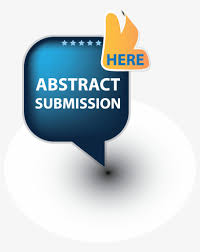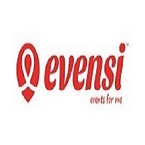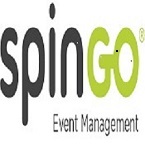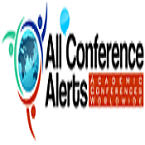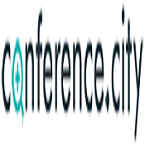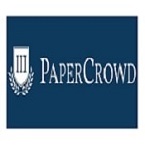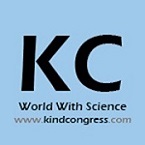Sessions & Tracks
Track 1:- Major Chromatographic Techniques
Chromatography basically is a method of separation of compounds from a mixture. The technique is both analytical and preparative and is employed widely in industries as well as in laboratories. Chemical analysis is mostly done all over the world with chromatography or any other various techniques related to chromatography. Chromatography is a physical technique and has a vast application in chemical field starting from basic analytical chemistry to forensic science.
Related Societies: German Chemical Society; Italian Society for Separation Science; British Mass Spectrometry Society; Royal Netherlands Chemical Society; Swedish Mass Spectrometry Society; Swedish Chemical Society; Chromatography and Electrophoresis Group of the Czech Chemical Society; Separation Sciences Foundation of Denmark; Association Francophone des Sciences Separatives; Hungarian Society for Separation Science.
Track 2:- Advances in Chromatography-HPLC Instrumentations
HPLC is a popular method of analysis for natural products because of its high accuracy, precision and is not differed by the stability or the volatility of the compounds. HPLC combined with diode array detector (HPLC-DAD), mass spectrometer (HPLC-MS) have been successfully utilized for the qualitative and quantitative determination of various types of phyto-constituents like alkaloids, glycosides, tannins, tri-terpenes, flavonoids etc. HPLC methods are used readily for the determination of drug in biological fluids and pharmaceutical dosage forms. HPLC determination with spectroscopic detection is useful for routine quality control of drugs in pharmaceutical dosage forms and stability studies.
Related Societies: Korean American Chromatography Association; Australian and New Zealand Society for Mass Spectrometry; Federation of Asian Chemical Societies; Royal Australian Chemical Institute; Hong Kong Society of Mass Spectrometry, The Japan Society for Analytical Chemistry; Israel Society for Analytical Chemistry; Chromatographic Society of India
Track 3:- Chromatography & Mass Spectrometry
Liquid chromatography is a fundamental separation technique in the life sciences and related fields of chemistry. Unlike gas chromatography, which is unsuitable for non-volatile and thermally fragile molecules, liquid chromatography can safely separate a very wide range of organic compounds, from small-molecule drug metabolites to peptides and proteins. Traditional detectors for liquid chromatography include refractive index, electrochemical, fluorescence, and ultraviolet-visible (UV-Vis) detectors. Some of these generate two-dimensional data; that is, data representing signal strength as a function of time. Others, including fluorescence and diode array UV-Vis detectors, generate three dimensional data.
Related Societies: Federation of Analytical Chemistry and Spectroscopy Societies; Chinese American Chromatography Association; Association of Analytical Communities; Society for Electro analytical Chemistry; Canadian Society for Chemistry; Canadian Society for Mass Spectrometry; Society for Analytical Chemists of Pittsburgh; California Separation Science Society; Society for Applied Spectroscopy; International Society of Chemical Ecology.
Track 4:- Chromatography in Pharmacy & Pharmaceutical
One of the most characteristic features of the development in the methodology of pharmaceutical and biomedical analysis is that HPLC became undoubtedly the most important analytical method for identification and quantification of drugs, either in their active pharmaceutical ingredient or in their formulations during the process of their discovery, development and manufacturing. Chromatography and spectroscopy are orthogonal techniques, i.e. their types of information are very different and are specific. Chromatography is a separation method and spectroscopy is a technique which yields a ‘fingerprint’ of individual or from mixture of molecules. HPLC is a technique for separation, quantification and identification of components in a mixture.
Related Societies: German Chemical Society; Italian Society for Separation Science; British Mass Spectrometry Society; Royal Netherlands Chemical Society; Swedish Mass Spectrometry Society; Swedish Chemical Society; Chromatography and Electrophoresis Group of the Czech Chemical Society; Separation Sciences Foundation of Denmark; Association Francophone des Sciences Separatives; Hungarian Society for Separation Science.
Track 5:- Chromatography in Food Science Technology
With modern technology and facilities, our food supply is more diverse and more highly processed than ever before. To ensure the safety and nutritional quality of our food many countries and organization have promulgated regulations that stipulate acceptable levels for individual chemical additives, residues and contaminants in food products. Other regulations require food packaging to list ingredients relating to nutritional content, such as preservative, artificial chemicals, unsaturated and saturated fat. Food manufacturers and processors themselves must be able to assess product quality. Meeting all of these requirements is the function of food analysis. Increasingly, food analysis methods are built around high-performance liquid chromatography (HPLC), which has proven to be an optimal technology for detecting and/or quantifying the vast majority of food analytes.
Related Societies: Korean American Chromatography Association; Australian and New Zealand Society for Mass Spectrometry; Federation of Asian Chemical Societies; Royal Australian Chemical Institute; Hong Kong Society of Mass Spectrometry, The Japan Society for Analytical Chemistry; Israel Society for Analytical Chemistry; Chromatographic Society of India
Track 6:- Biochemical Applications of Chromatography-HPLC
HPLC is a very common method for metabolomics analysis. With the invention of electrospray ionization, HPLC is coupled to mass spectroscopy. HPLC has lower chromatographic resolution, requires no derivation for polar molecules and separates molecules in the liquid phase. HPLC has the advantage of much wider range of analytes measurements with a higher sensitivity than gas chromatographic methods. Relevant to proteomics, due to the complex structure and nature of proteins, instrumentation and methods development for sample clean-up, pre-concentration, fractionation, chromatographic separation and detection becomes an immediate requirement for the identification of peptides and proteins. HPLC is considered as most reliable and most sensitive technique in genomics used to determine DNA methylation. The nucleosides and nucleotides of DNA are separated and quantified by HPLC-UV method. HPLC finds applications in glycomics and lipidomics where glycan part is cleaved either enzymatically or chemically from the target and subjected to analysis.
Related Societies: Federation of Analytical Chemistry and Spectroscopy Societies; Chinese American Chromatography Association; Association of Analytical Communities; Society for Electro analytical Chemistry; Canadian Society for Chemistry; Canadian Society for Mass Spectrometry; Society for Analytical Chemists of Pittsburgh; California Separation Science Society; Society for Applied Spectroscopy; International Society of Chemical Ecology.
Track 7:- HPLC Fingerprinting in Bioinformatics & Computational Biology
Fingerprinting is a quality control model that builds upon spectroscopic and chromatographic technology. It is different from the traditional quality control model in the sense that fingerprinting looks at the “complete information” or comprehensiveness of the chromatograph, and displays integrated quality information. Comprehensiveness and fuzziness are the two basic traits of a fingerprint. The similarity of fingerprints is established through these basic traits. Fingerprint analysis focuses on accurate identification (of similar peaks), and not on precise calculation. The comparison of fingerprints emphasizes similarity and the fingerprints compared do not need to be exactly the same.
Related Societies: German Chemical Society; Italian Society for Separation Science; British Mass Spectrometry Society; Royal Netherlands Chemical Society; Swedish Mass Spectrometry Society; Swedish Chemical Society; Chromatography and Electrophoresis Group of the Czech Chemical Society; Separation Sciences Foundation of Denmark; Association Francophone des Sciences Separatives; Hungarian Society for Separation Science.
Track 8:- Analytical & Bio-analytical Applications of Chromatography
HPLC can be used in both qualitative and quantitative applications that are for both compound quantification and identification. Normal phase HPLC is rarely used now, almost all HPLC separation can be performed in reverse phase. Reverse phase HPLC (RPLC) is ineffective in for only a few separation types. HPLC is applied for molecular weight determination, in analytical chemistry, pharmaceutical and drug science, clinical sciences, food technology, and consumer products, combinatorial chemistry, polymer chemistry, environmental chemistry and green chemistry.
Related Societies: Korean American Chromatography Association; Australian and New Zealand Society for Mass Spectrometry; Federation of Asian Chemical Societies; Royal Australian Chemical Institute; Hong Kong Society of Mass Spectrometry, The Japan Society for Analytical Chemistry; Israel Society for Analytical Chemistry; Chromatographic Society of India
Track 9:- Chromatography-HPLC in Bio-Medical Research
HPLC is the most versatile of all chromatography methods but also the most complex. It was first made available in the laboratory during the 1970s and is currently used for the analysis of amino acids, peptides, proteins, carbohydrates, lipids, nucleic acids and related compounds, vitamins, hormones, metabolites, and drugs. HPLC can be coupled to various detectors such as UV, fluorescence or mass spectrometry (LC/MS and LC/MS/MS) and is routinely used for quantitative analysis in biological samples such as blood, urine and other body fluids. HPLC consists of using a liquid mobile phase to pass under high pressure a mixture of analytes extracted from the sample through a column containing the stationary phase. Analyte separation is based on differences in interaction with both the mobile phase and the stationary phase.
Related Societies: Federation of Analytical Chemistry and Spectroscopy Societies; Chinese American Chromatography Association; Association of Analytical Communities; Society for Electro analytical Chemistry; Canadian Society for Chemistry; Canadian Society for Mass Spectrometry; Society for Analytical Chemists of Pittsburgh; California Separation Science Society; Society for Applied Spectroscopy; International Society of Chemical Ecology.
Track 10:- Hyphenated Chromatography Methods
The hyphenated technique is developed from the coupling of a separation technique and an on-line spectroscopic detection technology. Several remarkable improvements in hyphenated analytical methods over the last two decades have significantly broadened their applications in the analysis of biomaterials, especially natural products, pre-isolation analyses of crude extracts or fraction from various natural sources, isolation and detection of natural products, chemical fingerprinting, testing of herbal products, de-replication of natural products, and metabolomics.
Related Societies: Korean American Chromatography Association; Australian and New Zealand Society for Mass Spectrometry; Federation of Asian Chemical Societies; Royal Australian Chemical Institute; Hong Kong Society of Mass Spectrometry, The Japan Society for Analytical Chemistry; Israel Society for Analytical Chemistry; Chromatographic Society of India
Track 11:- Chromatography-HPLC as Separation Techniques
High Performance Liquid Chromatography (HPLC) is a non-destructive procedure for resolving a complex mixture into its individual fractions or compounds. Those solutes with a high affinity for the mobile phase will spend more time in this phase than the solutes that prefer the stationary phase.The process is called chromatographic development. The fraction with greater affinity to stationary layer travels slower and shorter distance while that with less affinity travels faster and longer. Ion exchange chromatography (IEC) uses an ion exchange mechanism to separate analytes based charge difference. It is performed in columns but can also be useful in planar mode. It uses a charged stationary phase to separate compounds including cations, anions, amino acids, proteins, lipids and peptides.
Related Societies: German Chemical Society; Italian Society for Separation Science; British Mass Spectrometry Society; Royal Netherlands Chemical Society; Swedish Mass Spectrometry Society; Swedish Chemical Society; Chromatography and Electrophoresis Group of the Czech Chemical Society; Separation Sciences Foundation of Denmark; Association Francophone des Sciences Separatives; Hungarian Society for Separation Science.
Track 12:- High Efficiency & High Resolution Techniques
UHPLC (Ultra-HPLC) or UPLC (Ultra Performance Liquid Chromatography) is now being adopted in industrial labs, especially the pharmaceutical industry due to its high speed, high resolution and solvent saving. A UHPLC method uses a sub-2micron column as it reduces the analysis time by 80% and save the mobile phase consumption by a huge amount compared to the conventional HPLC. In addition, the much shorter run time significantly reduces UHPLC method development scouting time. HPLC method development principles can be applied to UHPLC method development. Micro and Nano HPLC ensure high levels of flow rate flexibility and reproducibility.
Related Societies: Federation of Analytical Chemistry and Spectroscopy Societies; Chinese American Chromatography Association; Association of Analytical Communities; Society for Electro analytical Chemistry; Canadian Society for Chemistry; Canadian Society for Mass Spectrometry; Society for Analytical Chemists of Pittsburgh; California Separation Science Society; Society for Applied Spectroscopy; International Society of Chemical Ecology.
Track 13:- Method Development & Validation
Quality can be designed to processes through systematic implementation of an optimization strategy to establish a thorough understanding of the response of the system quality to given variables, and the use of control strategies to ensure quality. The concept of method development includes modelling of the influence of values of variables on quality, design of experiments, and simplification of processes as information is collected. The extension of QbD (Quality by Design) philosophies is now applied to the development of manufacturing processes and analytical methods. The ability of a chromatographic method to successfully separate, identify and quantitate species is determined by a powerful factor called experimental design. Automation of a process is one of the keys for increasing the productivity of a research group.
Related Societies: Korean American Chromatography Association; Australian and New Zealand Society for Mass Spectrometry; Federation of Asian Chemical Societies; Royal Australian Chemical Institute; Hong Kong Society of Mass Spectrometry, The Japan Society for Analytical Chemistry; Israel Society for Analytical Chemistry; Chromatographic Society of India
Track 14:- Recent Advances in Chromatography-HPLC
The HPLC methodology applied to the analysis of biological samples makes it possible for the identification of many metabolites. Samples from two human embryos culture medium were analysed by high-pressure liquid chromatography–mass spectrometry (HPLC–MS). They work on the principle that many microorganisms have their own unique mass spectral signature based on the particular proteins and peptides that are present in the cells. Identification of unknown peaks in gas chromatography (GC-MS)-based discovery metabolomics is challenging, and remains necessary to permit discovery of novel or unexpected metabolites that may allergic diseases processes and/or further our understanding of how genotypes relate to phenotypes. Here, we introduce two new technologies and advances in pharmaceutical analytical methods that can facilitate the identification of unknown peaks.
Related Societies: Federation of Analytical Chemistry and Spectroscopy Societies; Chinese American Chromatography Association; Association of Analytical Communities; Society for Electro analytical Chemistry; Canadian Society for Chemistry; Canadian Society for Mass Spectrometry; Society for Analytical Chemists of Pittsburgh; California Separation Science Society; Society for Applied Spectroscopy; International Society of Chemical Ecology.
Track 15:- Chip Based Chromatography Separations
This includes a micro fabricated separation device. The availability of the fused-silica capillary marked a significant breakthrough for gas chromatography and all gas chromatographs manufactured were equipped to use fused silica capillary columns. Fused-silica capillaries have a huge contribution to the developments of other micro separation technologies like supercritical fluid chromatography. The success of one separation technique relies on sample introduction technologies, separation column and sensitive detectors that can preserve chromatographic fidelity of high resolution chromatographic peaks, as is evident from the many injectors and detectors optimized and available for open tubular GC. A particle packed column is comprised of a Nano litre enrichment column and a micron or sub-micron separation column packed with suitable grade of C18.
Related Societies: German Chemical Society; Italian Society for Separation Science; British Mass Spectrometry Society; Royal Netherlands Chemical Society; Swedish Mass Spectrometry Society; Swedish Chemical Society; Chromatography and Electrophoresis Group of the Czech Chemical Society; Separation Sciences Foundation of Denmark; Association Francophone des Sciences Separatives; Hungarian Society for Separation Science.
Track 16:- Market Growth of Chromatography-HPLC
The global chromatography instrumentation market is segmented on the basis of systems, consumables, applications, and regions. The report studies the global chromatography instruments market for the forecast period of 2015 to 2020. The market is expected to reach USD 9.223 Billion by 2020 from USD 7.062 Billion in 2015, at a CAGR of 5.5%. It is anticipated that North America and Europe will continue to lead the market over the next five years; the chromatography market in Asia will expand and increase its market share. The drivers behind the expansion are two-fold: first the expansion of local companies in Asia and secondly, Western Pharma outsourcing its research and manufacturing operations to Asia, particularly China and India.
Related Societies: Korean American Chromatography Association; Australian and New Zealand Society for Mass Spectrometry; Federation of Asian Chemical Societies; Royal Australian Chemical Institute; Hong Kong Society of Mass Spectrometry, The Japan Society for Analytical Chemistry; Israel Society for Analytical Chemistry; Chromatographic Society of India.
Track 17:- Measuring surfactants
Measuring surfactants is essential in industries like cosmetics, detergents, and pharmaceuticals. Common methods include titration, surface tension measurement (Du Noüy Ring or Wilhelmy Plate methods), and conductivity tests. Spectrophotometric techniques, such as UV-Vis spectroscopy and colorimetric assays, are also widely used. Advanced methods like High-Performance Liquid Chromatography (HPLC) and Mass Spectrometry (MS) provide precise identification and quantification. Foam analysis and Critical Micelle Concentration (CMC) determination are additional techniques to assess surfactant properties and concentrations. These methods ensure product quality and performance.
Related Societies: Korean American Chromatography Association; Australian and New Zealand Society for Mass Spectrometry; Federation of Asian Chemical Societies; Royal Australian Chemical Institute; Hong Kong Society of Mass Spectrometry, The Japan Society for Analytical Chemistry; Israel Society for Analytical Chemistry; Chromatographic Society of India.
Market Analysis
The global chromatography market is forecast to grow at a CAGR of almost 7% during 2020-2024, and the market size will increase by USD 4.75 billion during the forecast period of 2020-2024. Between 2020-2024, the chromatography market will grow at a faster pace than the overall market growth in 2022. The growth momentum of the chromatography market is expected to accelerate in the second half of the forecast period compared to the increase in the first half.
The chromatography market is concentrated, and the degree of concentration is expected to decrease by 2024. An outlook of accelerating growth would provide opportunities to all market participants to grow. Market participants should focus on the opportunities on the demand side rather than getting overly impacted with the competitive dynamics. The accelerating growth momentum will be one of the contributing factors moderating the competitive intensity in the market over the forecast period.
Life science was the largest segment within the overall market in 2022 and will continue to remain so in 2024. The growth rate of the life science segment will be faster than the global market growth during the forecast period 2022-2024. However, the growth rate of the research and other segments will be slower than the overall market growth.
To identify growth opportunities in the chromatography market, the market has been segmented into regions that are growing faster than the overall market. These regions have been pitted against regions that have a slower growth rate than the global market in 2022-2024. Asia will grow faster than the overall market. Market growth in Europe, North America, and ROW will be slower than the global market.
Global chromatography industry overview:
Portable laboratory systems such as portable gas chromatography are being preferred over conventional systems because of their ability to provide real-time, direct, and onsite measurements of organic and inorganic analytes in a sample. With the rising requirement for rapid, high-quality analysis on-site, the demand for portable analytical systems will increase during the forecast period, boosting the growth of the chromatography market.
Chromatography market segmentation based on end-users
-
Life science
-
Research
-
Others
The life science segment will account for the highest chromatography market share. The increasing demand for pharmaceutical drugs and drug delivery technologies and the rising investments in R&D will drive the demand for chromatography from the life sciences industry.
Chromatography market segmentation based on geographic region
-
Asia
-
Europe
-
North America
-
ROW
With a complete study of the growth opportunities for companies, it has been identified that North America will account for the highest chromatography market share throughout the forecast period. The growing focus on drug and vaccine discovery and development and the recent advancements in biotechnology and pharmaceutical research are some of the significant factors responsible for chromatography market growth in this region.
Target Audience:
-
Chromatography instruments manufacturers
-
Chromatography instruments distributors
-
Healthcare institutions (hospitals and diagnostic centers)
-
Vendors/service providers
-
Research institutes
-
Pharmaceutical and biotechnology companies
-
Research and consulting firms
Related Companies/Industries:
-
Agilent Technologies Inc.
-
Bio-Rad Laboratories Inc.
-
Danaher
-
Shimadzu Corporation
-
Thermo Fisher Scientific Inc.
-
Waters Corporation
-
Shimadzu Corporation
-
PerkinElmer, Inc.
-
Danaher Corporation
-
Merck KGaA
-
Restek Corporation
-
Gilson, Inc.,
-
JASCO
-
SCION Instruments
Association & Societies:
-
Global Chromatography and HPLC Associations
-
American Chemical Society.
-
American Organization of Analytical Chemists International (AOAC)
-
American Society for Mass Spectrometry.
-
An International Separation Science Society.
-
Association of Analytical Communities (AOAC) International
-
Chemical Institute of Canada (L'Institut de chimie du Canada)
-
Chemical Research Society of India (CRSI)
-
American Crystallographic Association (ACA)
-
American Association of Pharmaceutical Scientists (AAPS)
